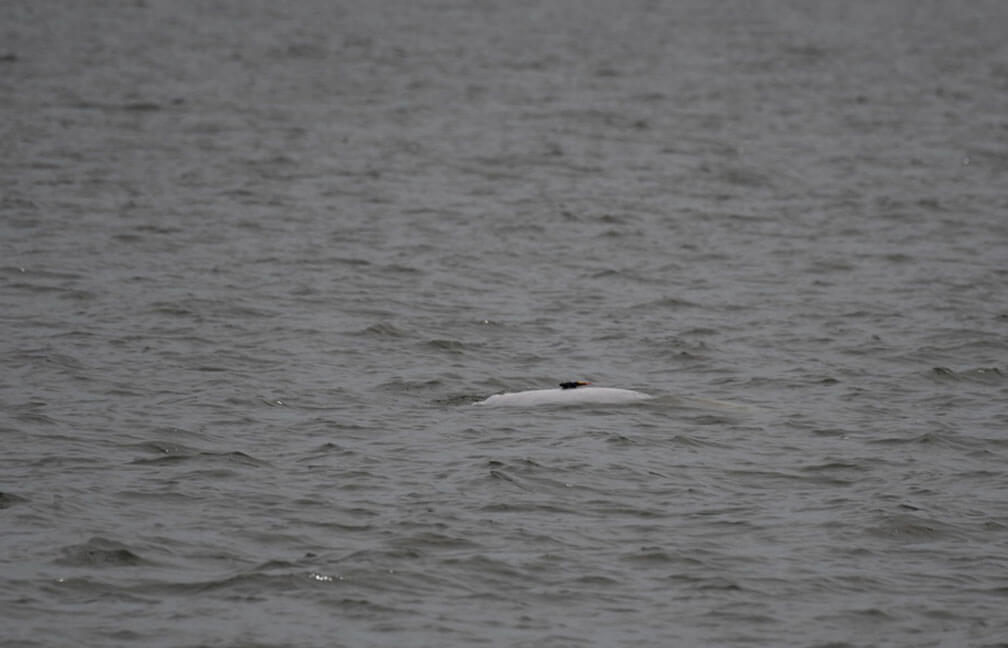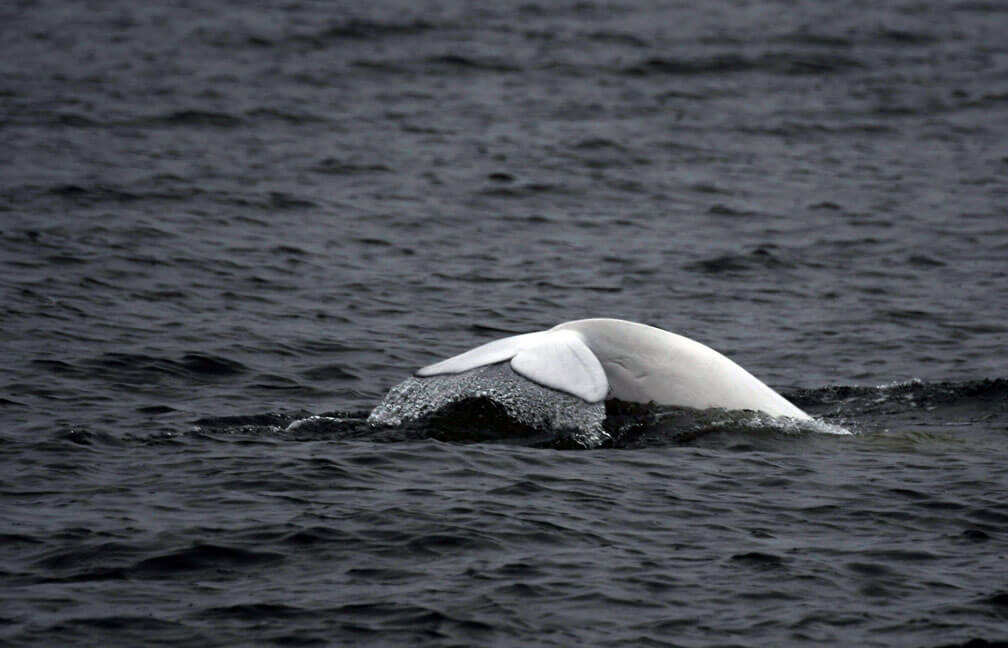By Mathieu Marzelière
At last! GREMM’s 2019 field season is officially underway. This first week was devoted to Fisheries and Oceans Canada’s tagging project in which we are collaborating in the field. This initiative aims to better understand the acoustic life of belugas, their movements and behavioural responses during and after noise exposure and the effect that noise has on their diet.
But the weather cooperated only on Thursday! Nevertheless, it was a productive day.
After spending the morning in search of groups of males in the downstream sectors of the Saguenay-St. Lawrence Marine Park, we decide to change course and try our luck farther upstream by heading toward Rivière-du-Loup.
Around 12:30, not far from the “Brandy Pot” islands (Îles du Pot à l’Eau-de-Vie), we encounter a multitude of birds that frequent this area this time of year (razorbills, murres, night-herons, great blue herons, etc.). And below, our first group of belugas of 2019! It’s a small group of about fifteen white and grey individuals engaged in what we call “milling”. Milling is a near-stationary swim during which belugas make deep dives and resurface in practically the same place. This behaviour is believed to be associated with feeding.
One of the belugas looks familiar. We recognize it when it dives: it’s DL9095, which we’ve nicknamed “Moignon”, which mean «stump» in French! We first encountered Moignon in August 2018 off the coast of Trois-Pistoles.
After an hour with the animals, we still have not managed to tag a single beluga. We decide to change groups in hopes of finding more cooperative individuals for science.
A second group of about thirty individuals, most of whom are grey in colour, is spotted downstream of our first observation site. Among them we identify a few individuals known to our team, including two animals with deformed backs: Pascolio (adopted in 1990 by Tadoussac business owners) and Dimitri. We also spot DL9039 (currently being adopted by students of Polyvalente Chanoine-Armand-Racicot)
And after approaching them in just 30 minutes, the tag is quickly placed on the back of a small curious individual that has come to inspect the research boat.
Remote tracking follows. Our small tag is equipped with a transmitter that broadcasts series of short beeps (via radio waves) when it surfaces. With the help of an antenna and a receiver, we visually search for the beluga whose breathing sequences, i.e. its ascents to the surface, are consistent with the sound signals being picked up by our receiver. An additional challenge is trying to maintain a certain distance so as not to interfere with the animal’s behaviour.
Then, after a few hours of tracking, a series of continuous beeps tells us that our tag has fallen off the back of our “wiretapped” beluga. The tag is then located first by following the signal intensity, then by visual contact, and ultimately retrieved in order to extract the invaluable data it contains. The latter will be used for research by Fisheries and Oceans Canada’s Véronique Lesage and her team.








